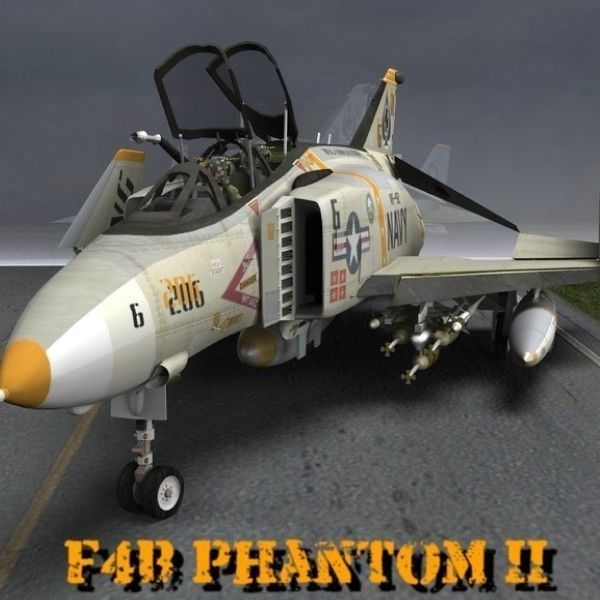
F4B Phantom for Poser 3D model
cgtrader
The F4 Phantom was a remarkable aircraft, albeit with certain initial drawbacks that were eventually addressed. In this illustration, I depict a Navy F4B of the Vf-92 Silver Kings Squadron during the Vietnam Conflict, as it would appear in service. Distinct from the Air Force's F4C version, the F4B featured a shortened nose cone to facilitate carrier operations on elevator lifts (the Air Force received the F4C, which had a longer nose and different electronics but was otherwise identical). The early J-79 engines provided immense power, yet generated significant smoke trails at mid-throttle/cruise settings, compromising stealth. This issue was resolved by upgrading to smokeless combustors that efficiently burned fuel in the exhaust. The F4 Phantom also boasted an unconventional flight control system; it employed flaperons and upper wing surface spoilers for roll control, though during certain types of ACM, the spoilers would become ineffective due to angle of attack, necessitating rudder rolls. This led to adverse yaw during maneuvers, prompting the addition of leading edge slats on Navy F4Bs, which were redesignated as F4Ns. The aircraft was among the first to feature a Boundary Air Layer control system for enhanced low-speed flight handling. Until the F4E variant, the Phantom lacked an internal gun and had to rely on external gun pods due to outdated doctrine. However, with the advent of heat-seeking and radar-guided missiles that underperformed in combat, the aircraft started carrying SUU-16 and later SUU-23 20mm Gun Pods. Accuracy issues were partly resolved by equipping the SUU-23 with necessary gun sights. Despite these initial challenges, pilots praised the Phantom for its responsiveness and control even at the edge of its flight envelope. The aircraft held multiple world records, such as the World Speed Record and a Zoom Climb Record, and boasted an impressive 18,000lbs of external stores capacity - double that of a WW2 B-17 bomber. The F4B was accepted by the Navy in 1961, while the F4C was adopted by the Air Force in 1963. Today, Phantoms remain in service globally, though they were retired from US production in 1979 and from active US forces' use in 1996 after over three decades of combat duty. Some F4s have been repurposed as Remote Target Drones for the US military.
With this file you will be able to print F4B Phantom for Poser 3D model with your 3D printer. Click on the button and save the file on your computer to work, edit or customize your design. You can also find more 3D designs for printers on F4B Phantom for Poser 3D model.
